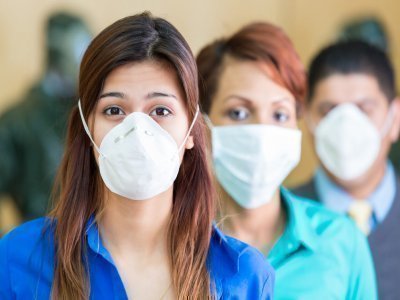Facemasks - The Facts
Facemasks: to wear or not to wear, what type, what are their capabilities – here are some facts for you.
Firstly, there is great sense in the official policy (as per the ABC Website) that “face masks are not recommended for healthy individuals, but essential for health workers and sick people”.
Our understanding is that for non-high risk environments (e.g. places other than hospitals and other similar areas), surfaces are by far the most likely transmitter and personal distancing and close attention to hygiene are key. This is being borne out by overseas experience and is what we are doing at JTA both at work and outside of the workplace.
If you do feel the need to wear a mask, and in the unlikely event you can get your hands on one, there has been some confusing information on their capabilities. Here are some facts, checked with Terry Gorman, Certified Occupational hygienist for 3M Australia:
- There are many types of masks. The most common in use for protection against the Coronavirus appear to be disposable (meeting Australian/New Zealand Standard AS/NZS 1716) P1, P2, and P3 disposable half face masks and surgical masks. The P rating applies to the filter performance in removing particulates. P2 and P3 masks are recommended for Coronavirus but masks with filters rated as P1 or N95 will probably do the job almost as well.
- Masks need to remove the virus and fit the wearer i.e. not leak. P1, P2 & P3 masks are designed to remove small particles. For Coronavirus, the mask needs to filter out airborne water droplets from sneezing and coughing of infected individuals.
- Surgical masks: We are not experts on surgical masks but our understanding is they are designed for emissions in surgical environments not Coronavirus.
- P1, P2 or P3 masks: A correctly fitted P2 or P3 (and probably P1) mask will protect the wearer by filtering out water droplets carrying the virus. Correct fit is normally the weak link. Fit is compromised by facial hair, inadequate attention to fitting and the infinite variety of face shapes (not everyone can get a seal with any particular mask).
- Many masks have exhalation valves allowing free flow of exhaled breath, so obviously, these will not protect others from Coronavirus carried on water droplets emitted from an infected wearer. If you have symptoms these will not protect your family.
- P2 masks without exhalation valves will filter out the virus under normal breathing conditions. Coughing and sneezing and possibly heavy breathing during exercise produce accelerated airflows which will affect fit. So the elbow cough could, quite possibly, be more effective at containing these critical emissions.
- JTA are currently looking at ways to decontaminate PPE; given the current shortage this is important. So far there has been no definitive advice. The face-piece of masks designed for re-use can be cleaned with mild detergent and water (as per the manufacturer’s instructions) however the filter may not be easily cleaned and must be treated as a potential source of the virus.
It may be possible to decontaminate masks normally meant for a single use or to store them in a breathable container (e.g. a paper bag) between uses to keep them clean but the mask must be treated as a potential source of the virus. Touching your mask is no doubt better than touching your face; but touching your mask (e.g. while removing it) then touching your face before washing your hands may be much the same risk.
So masks are no magic bullet and for most of us, a disciplined approach to routine, boring old hand washing, surface wiping, elbow coughing, social distancing and no face touching may be more effective.









